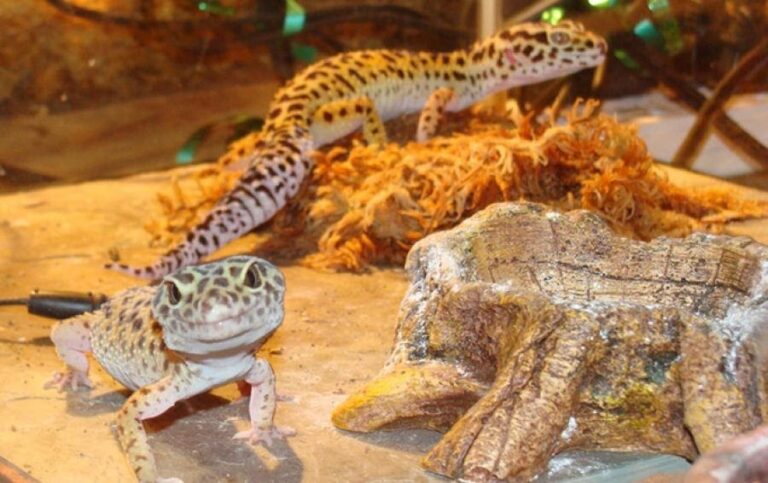
Leopard geckos are adorable and easily interact with their owners. If you want a friendly reptile, they are your best choice. Even though they require less maintenance, the baby geckos need special care. They lack an adequately developed body with a robust immune system. So, they are more prone to become ill or injured. Hence, if you have bought a baby leopard gecko, you need to take good care of them. You can use this article as essential guidance for your baby reptile pet.
How to house them?
Baby geckos need ten to 20-gallon terrarium as their habitat. You can also use plastic storage compartments with a minimum height of one foot to house your pet. It is best to buy a 20-gallon tank as you can use it for keeping the gecko when it becomes an adult.
You need to cover the container or terrarium with a mesh covering to ensure ventilation. You can also add a small box filled with moist moss to maintain the humidity level inside the terrarium. It will also help the gecko to shed its first skin in the right environment.
You need to create a proper habitat with real and artificial plants with multiple vertical and parallel climbing arrangements. It will help your pet learn climbing from a young age.
Please provide them with proper heat and humidity.
Any geckos need a warm and somewhat humid environment to grow naturally. And, for babies too, heat is essential. You need to provide them with a continuous heat source.
You can place a heat bulb over their terrarium or a heating pad under their tank. Using hot rocks is not advised. It is because the stones can become hot and can burn the baby pet.
The geckos are ectoderms like any other reptile. That means they need external heat sources to maintain their body heat. Hence, you need to provide them a hiding spot as well. An ideal habitat cage of a leopard gecko contains heat zones and cool zones. The geckos can rest in the cool hiding spot and bask in the hot spot as per their choice. You can use a thermometer to maintain the temperature range inside the terrarium.
UV lights are not necessary. The leopard geckos are nocturnal and remain active at night. So, you can skip the UV light easily.
The humidity is a crucial point for any baby leopard gecko. You need to maintain the humidity level from 50% to 70% to provide the best atmosphere to grow. You can use hygrometers to keep the humidity inside the tank. Misting the container once per day also helps to maintain the humidity level.
Wild geckos usually live on sand or soil. But, the pet geckos do not need such substrate bases. It is because they tend to consume the substrates and may suffer from intestinal diseases. It is better to use recycled papers with a soft surface as the substrate inside the terrarium. You can also use reptile carpets, which are safe yet natural. But, you may need to replace them frequently.
What to feed the baby geckos?
Baby leopard geckos need more calories and nutrition to grow up. They are always hungry. Hence, you need to feed them regularly.
Leopard geckos are insectivores, and feeding them live insects is the best idea. You can provide those crickets or mealworms per day. You need to feed insects that are not longer than the head of your pet reptile. You can also feed them small-sized dubia roaches.
If the leopard gecko is tiny, you can hand feed them till they learn to eat by themselves. After they learn to eat, you can provide them with live insects in the food bowl.
For baby geckos, a shallow yet large food bowl is better. They can climb inside the container to eat their food. Additionally, providing them fresh drinking water in a shallow bowl is a good idea.
You can use the tips to provide the best upbringing to your baby leopard gecko. You can also consult an expert for more advice.